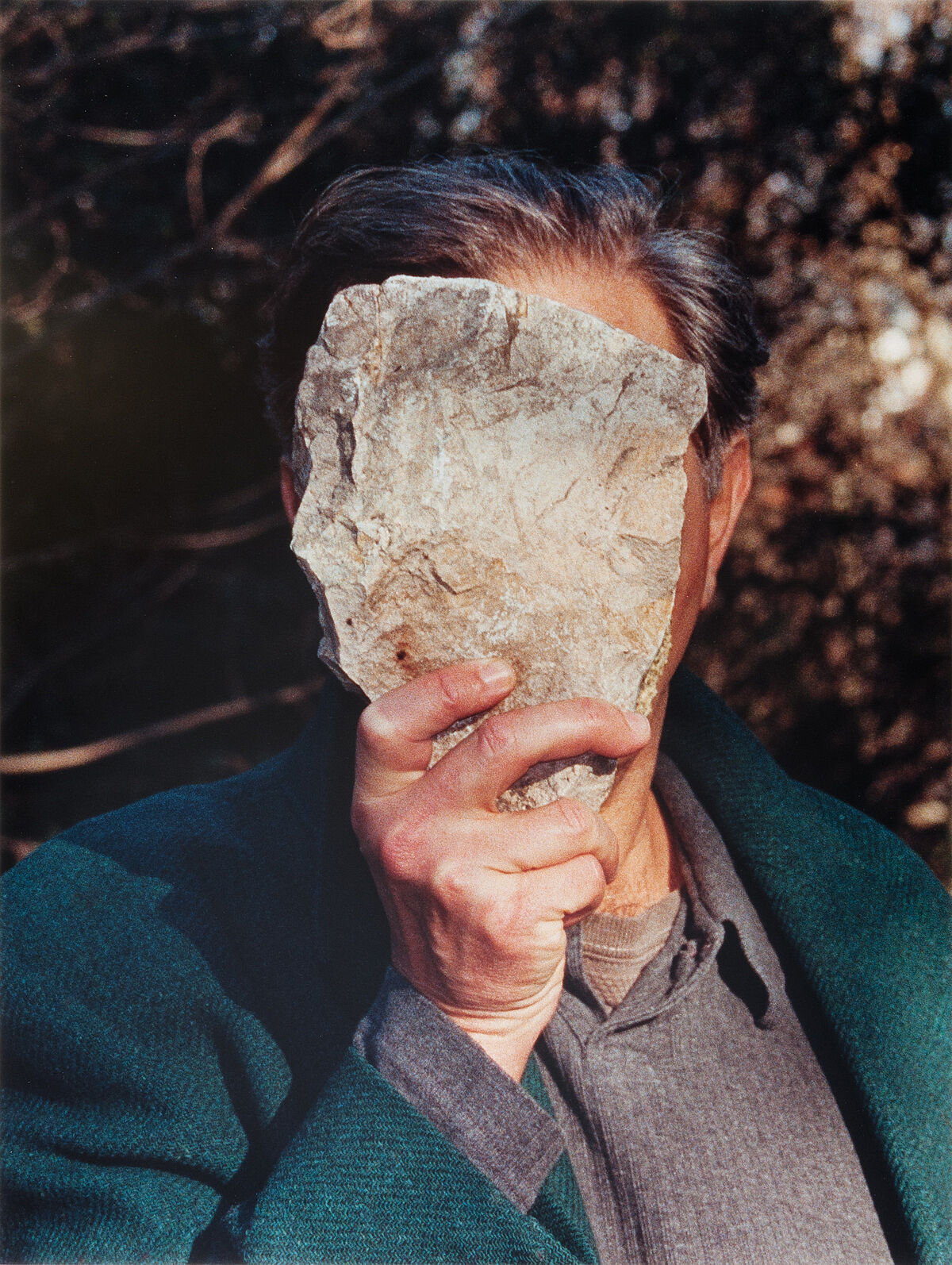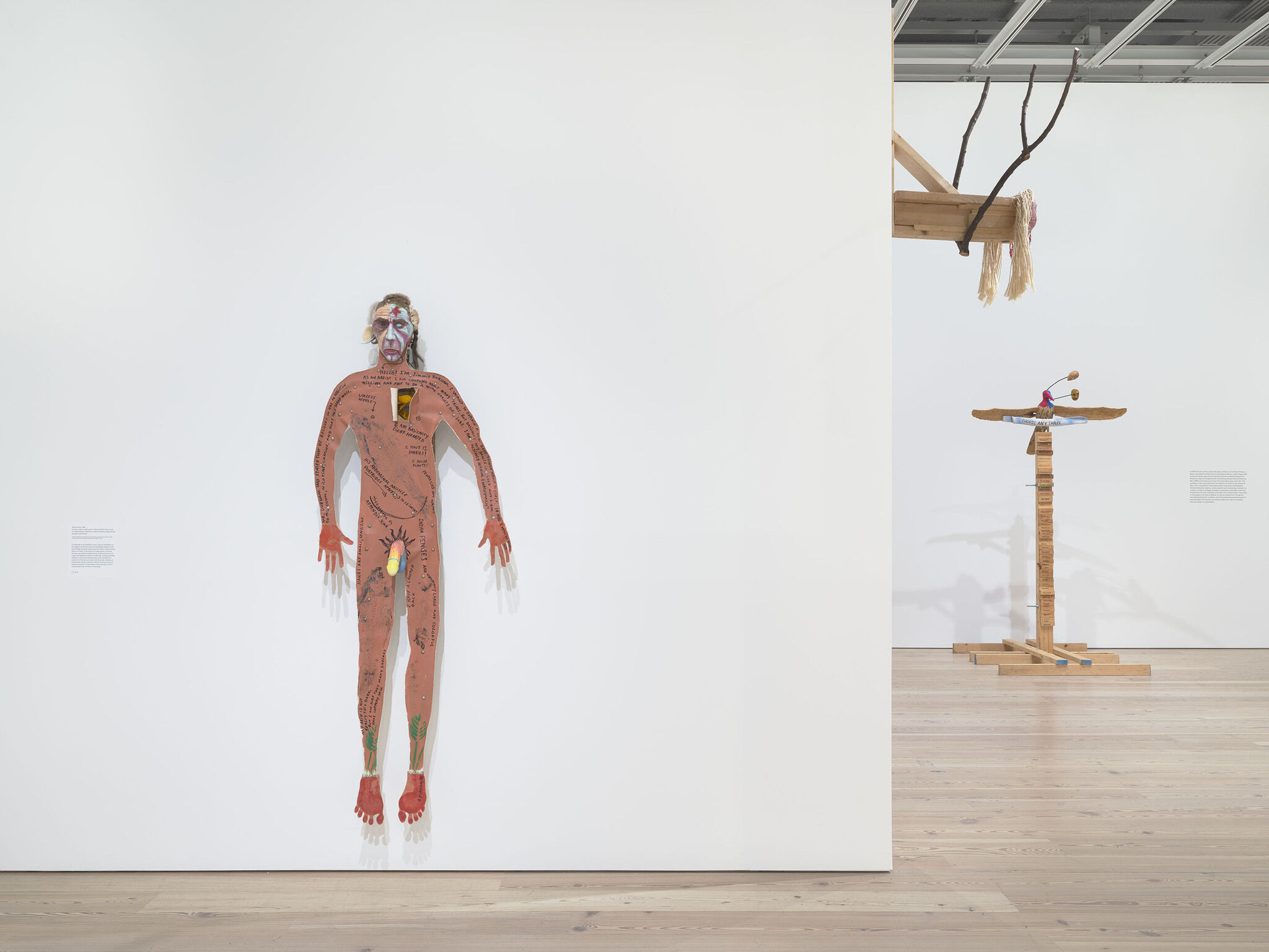Narrator: This was the first self-portrait Durham ever made. But in some ways, it’s more of an anti self-portrait. He started the work with help from his partner, artist Maria Thereza Alves.
Jimmie Durham: We had some canvas, I laid it on the floor and asked Maria Thereza to trace my body. I cut that out and then I had a beginning. Then I took some calipers that sculptors used to use to measure things, and I measured every part of my face and then carved it out of wood.
I started writing things on my body in the early '80s. Everybody who wrote everything in the art world were talking about something was inscribed on something, and ‘inscription’ and ‘inscribed’ was everywhere, so I thought, "Hey, I'm going to inscribe on this body." [laughs] I wanted to say things that were not true, but that were absolutely not lies. Nothing is true, nothing is a lie. I don’t tell any lies.
I don't like self-portraits. I've done hundreds of them by now because I got into it. But when you look at painters—to me, it's in my mind, it's always men, but it's not true, is it? But the men stare in the mirror, and they're always painting themselves staring in the mirror as though it's a proof of something.
It's not, in any sense, real because this European idea of painting is a pretty silly construction. It’s not a portrait that looks like a person, because they're flat, they're little, and they're dead. [laughs] The world is living, three-dimensional, and completely different.





